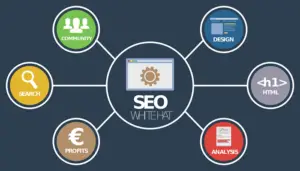User expectations have expanded as a result of web applications’ ever-expanding functional capabilities. For increased user engagement, new features are often added to web applications. Automated testing is required to test these functionalities and ensure the Interface operates correctly.
Automation makes testing quick and effective, catching errors and flaws early in development. Thus avoiding the need to address faults that are later found, can save a significant amount of time and resources. Automation is crucial for testing because numerous tests may need to be performed each time the application is modified. Instead of repeatedly manually executing the same tests, developers may concentrate on writing new code and improving the application by automating these tests.
Selenium is the top choice for running automated tests among testers all around the world. Python, C#Java, Perl, Ruby, and JavaScript are just a few of the scripting languages that Selenium supports. Depending on the application being evaluated, one can choose the script appropriately.
This article will provide a detailed Selenium Python tutorial on how to carry out web automation testing. Here, we’ll discuss the Selenium Python binding, the benefits of using Python and Selenium for automation, and why programmers favor Python in Selenium. Lastly, we will discover how to build up a development environment so that we can begin automating testing using Python and Selenium. Let’s first get a brief introduction to Python and Selenium before continuing.
Table of Contents
Selenium
Selenium is a lightweight, open-source automated testing framework for web applications. It supports a variety of browsers, including Internet Explorer, Firefox, Safari, and Chrome. Selenium has a wide range of functionalities that enable users to automate browser interactions to test online applications as if they were interacting with the website themselves. It can imitate actions on a webpage like clicking links, finishing forms, and making transactions.
Selenium has a wide range of applications and is frequently used with various frameworks, assertion libraries, and even scripting languages like Python. Selenium can also automatically check the functionality and performance of web applications and generate reports with data directly from websites.
Users can build step-by-step interactions with a web page and evaluate how a browser reacts to various modifications with the use of Selenium capabilities. It enables users to assess whether the browser’s response matches their expectations.
Python
One of the most widely used scripting languages nowadays is Python. Since it offers its users so many advantages, it is regarded as a flexible programming language. It is simple to learn and effective for a range of tasks. Users can use Python to build websites by utilizing programs like Flask and other tools. Python can be used for data science, machine learning, and other purposes. Programmers of all levels of experience prefer it for its simple syntax and the variety of libraries and packages it offers.
It features a tonne of built-in testing frameworks, which enables users to do debugging and develop quick workflows. Selenium is one of the Python test automation frameworks that are most frequently used. Using Python and Selenium together makes it easier to execute automated test cases for web apps or browsers. It is simple to use Selenium with Python to mimic tests such as clicking a button, putting data into structures, browsing a complete website, etc.
Python with Selenium integration
The Selenium Python bindings offer a practical API for quickly writing short reliable tests with minimum code. Users can quickly and easily access all of Selenium WebDriver’s various functions by using this API.
Python automated testing can be done with the Selenium Python Module. Writing functional or acceptance test cases using the Selenium web driver is the first step in getting started with Selenium in Python. A request is then sent to the back-end Selenium server, which automatically runs the test cases on the browsers. Any browser, including Firefox, Chrome, IE, Edge, etc., can be used to run the tests. The web drivers, which are unique to each browser, are the only things that need to be changed.
Why should automated testing use Python and Selenium?
The extensive toolbox of Selenium firmly supports the quick creation of test automation for online applications. It offers a range of testing features to suit web application testing requirements. The object-based, high-level scripting language Python, on the other hand, was created especially for easy interpretation.
Selenium Python automated testing is more feasible for several reasons, including:
- It runs quickly and is simple to read and code.
- Using Selenium to connect to the browser is made simpler by the Python API. Python Selenium bonding offers simple APIs for successfully running functional and practical tests on Selenium WebDriver.
- Python is a very user-friendly computer language that is also less complex than other programming languages. Users may interact with the browser using Selenium because of the Python API. Selenium can easily convey common Python commands to several browsers, regardless of how each browser is created.
- The Selenium Python library is easy to use.
- Python-based Selenium includes a large selection of tools for the extension. As a result, Selenium is a reliable Python binding.
Why do programmers prefer Python for Selenium?
Python is the most popular language when it comes to the essential factors for selecting a programming language based on simplicity. In contrast to other programming languages, it has the simplest grammar. So, as compared to complex automated testing, Selenium Python is the simplest and safest option. Python-based Selenium automated testing offers several benefits. They are-
- Python is a user-friendly, simple, and effective language.
- Users can write test cases because of its strong community support.
- Testing execution can be done more adaptively because Python applications run faster.
- Selenium enables the link between the Python API and the browser. The combination of Python and Selenium provides an easy-to-use API for creating functional tests by carefully utilizing Selenium WebDriver Python.
- Almost all platforms, including Windows, Linux, and Mac, are compatible with Python. This shows a relatively low learning curve, which facilitates the creation of Selenium testing scripts.
- PyTest is the most widely used framework for Python automation testing. It is used for end-to-end testing, integration and system testing, and unit testing, just like other Python frameworks. More capabilities have been added to strengthen it and support parameterized testing. The plugin for the PyTest framework extension helps with parallel testing among other things.
- The Python syntax command greatly improves the readability and clarity of Python programs.
- By utilizing the extensive standards supplied by the Python libraries, testers can develop efficient automation scripts for the automated test suite.
Now that it is clear why programmers choose Python, we can begin with a step-by-step tutorial for creating a reliable automated testing framework using Selenium Python. Installing Python, Selenium, and any other required libraries is part of this process.
Installing Python
Python installation is the first thing that needs to be done. The simplest approach to install Python is to download the installer from the official website and run the most recent version of it.
By simply using python -V in the Command Prompt/terminal after installing Python, the installation may be validated. The version of Python that has been installed can be seen after installation.
Installing Selenium
Installing Selenium will come next after Python has been installed. The default installation of Python does not include the Selenium libraries. Using the installer pip is the simplest approach to installing Selenium in a Python environment.
To check if Selenium libraries are already installed in Python, open a command line; go to the place where Python is installed, and type “pip list.” This command will display a list of the libraries that are currently installed with Python. Afterward, check the Selenium libraries using the pip list command.
The preferred Installer Program is referred to as PIP. Installing Python software packages requires this well-known package manager. PIP and Python are installed by default. Now it needs to run a command to bind/install all the Selenium libraries needed with Python. The Selenium libraries and all dependencies will be downloaded and installed after the command has been run. The installation of Selenium is complete, and it is now available for use. Now it needs to configure the driver.
Requirements for using Python to perform Selenium tests
The WebDriver is Selenium’s primary component. It is an application that manages a web browser and enables the automation of browser actions. For different browsers, such as Chrome, Firefox, and Safari, a variety of WebDriver are accessible.
While all of Selenium’s features are made available by installing Selenium. There is still one more step left before developing the Selenium Python test to launch and communicate with a specific web browser. Each browser has a unique driver; for instance, Firefox uses the GeckoDriver whereas Chrome uses the ChromeDriver.
Download the driver following the device compatibility to continue. Once the correct driver for the selected browser version has been downloaded, unzip it and copy the files to a system folder to use them to control the browser.
The package and drivers can be downloaded if Selenium will only be tested locally. The Selenium Server, which is available on Selenium’s download page, must also be downloaded and installed to set up Selenium Python automation on a remote server.
Run Selenium tests using Python on LambdaTest
Automating the testing procedure saves a huge amount of time during the test process. Automation testing is now simpler and more effective than ever because of Selenium. It is simple and effective to carry out automated testing for applications when test scripts are created using Python in Selenium. This is helpful in particular when there are short development cycles and frequent feature additions are required to meet consumer demand.
The ideal option for delivering an application with the best user experience is to employ a cloud-based platform like LambdaTest. With the help of LambdaTest, automated tests may be considerably improved, enabling users to build efficient, low-cost test cases that comprehensively evaluate any web application.
To scale up a huge number of tests, LambdaTest, a cloud-based Selenium testing platform, provides a Selenium Automation Grid. Using Selenium Grid reduces runtime and boosts productivity while running test cases. Similar to this, Selenium Grid assists the QA to use resources more effectively with parallel tests and speeds up test case execution when tests need to be run in numerous settings on any number of remote devices and operating system combinations.
LambdaTest gives testers access to a cloud Selenium Grid of more than 3000 real devices, browsers, and operating systems where they can run Python-based automation test scripts. Using LambdaTest Selenium grid testers may reduce the build time of Python automation scripts, enhance their test coverage, and check for cross-browser compatibility across a wider range of browsers.
To put it briefly, LambdaTest is an all-in-one test automation platform that is easy to use, flexible, reliable, and allows testers to automate a variety of testing tasks, including functional and regression testing, cross-browser testing, continuous testing, data-driven testing, and more. Testing of both mobile and web applications is supported by this platform.
Conclusion
This article has helped in gaining the foundational knowledge needed to begin building automation test scripts using Selenium and Python and to use Selenium Python to execute web browser and web application automation.





